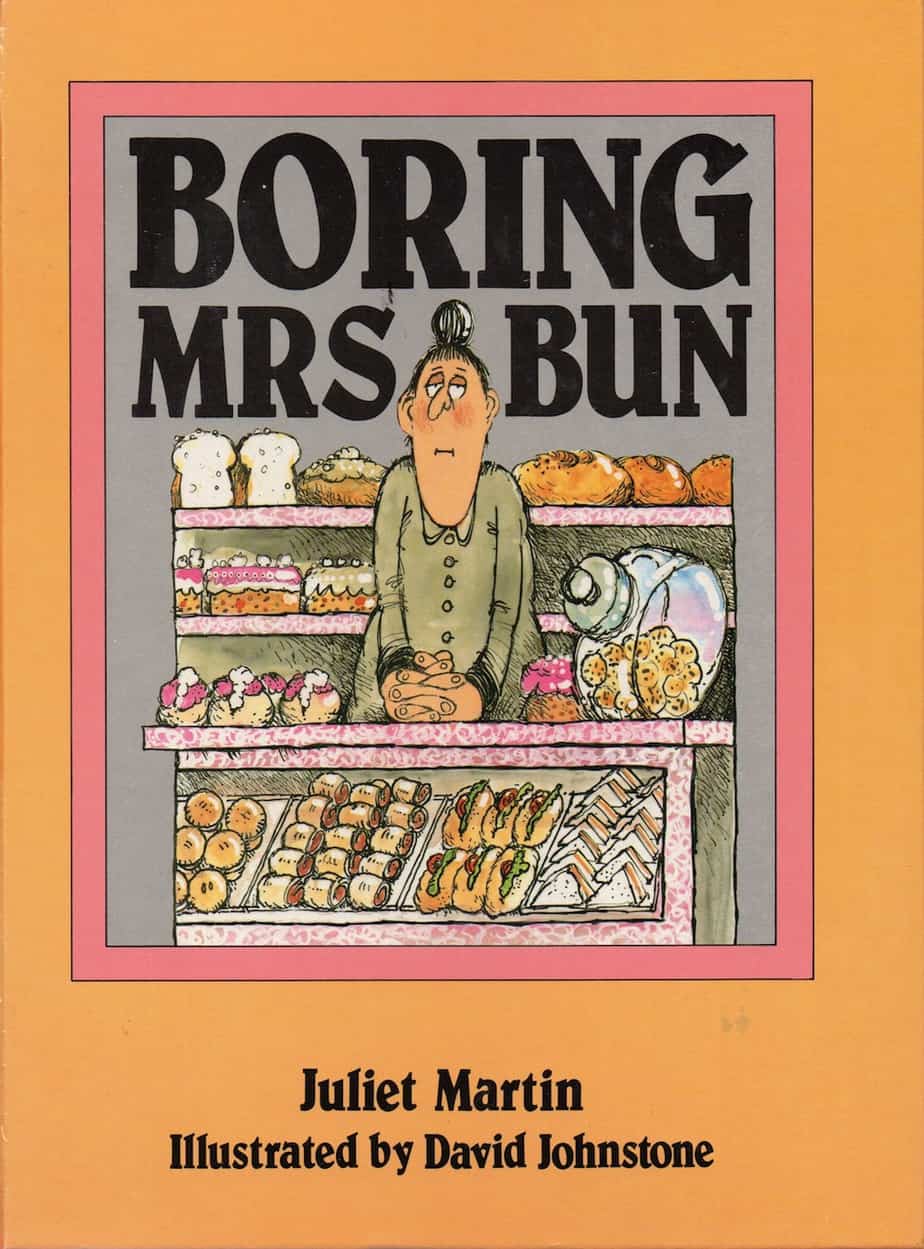Boring Mrs Bun is a 1986 character sketch picture book by Juliet Martin and David Johnstone. What sort of story is Boring Mrs Bun?
Almost every story in the world is structured like this.
But #NotAllStories
Rather, not all books we’d call stories. Not all picture books are stories. Some are abecederies. Others function simply to introduce the young reader to new concepts.
Every now and then you get a mood piece.
Boring Mrs Bun is a character sketch.
There is an inevitable problem that comes with character sketches, at least of the thumbnail kind. Spending an entire novel delving into the psychology of a character is a completely different matter, but the best authors avoid thumbnail character sketches.
You may notice that picture book authors avoid them completely. This isn’t because of the common prejudice that children do not like descriptions, preferring scenes and dialogue (because it has been shown empirically that actually children enjoy the pauses in picture books as much as adults do) but comes down to something else:
- The wish for reader to see themselves in the character (the Everyboy and the Everygirl)
- The wish to avoid stereotyping.
It’s impossible to describe a character without that description meaning something, possibly something you don’t intend at all.
Let’s take a look at Boring Mrs Bun as a case study.
The book opens with this image:
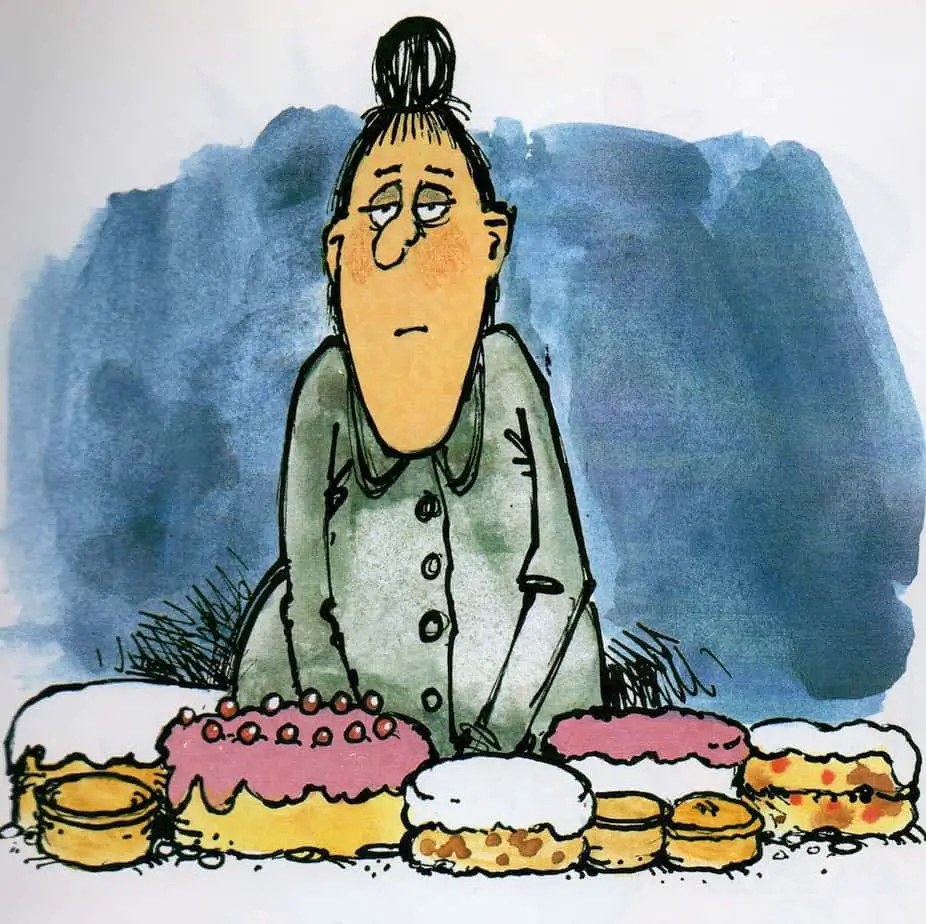
Mrs Bun works behind the counter of a cake shop. She always looks the same.
She wears a long grey overall that buttons to the neck.
She scrapes her hair back from her face and knots it in a bun.
People look at Mrs Bun and think that she is BORING.
But we know better…
Overleaf:
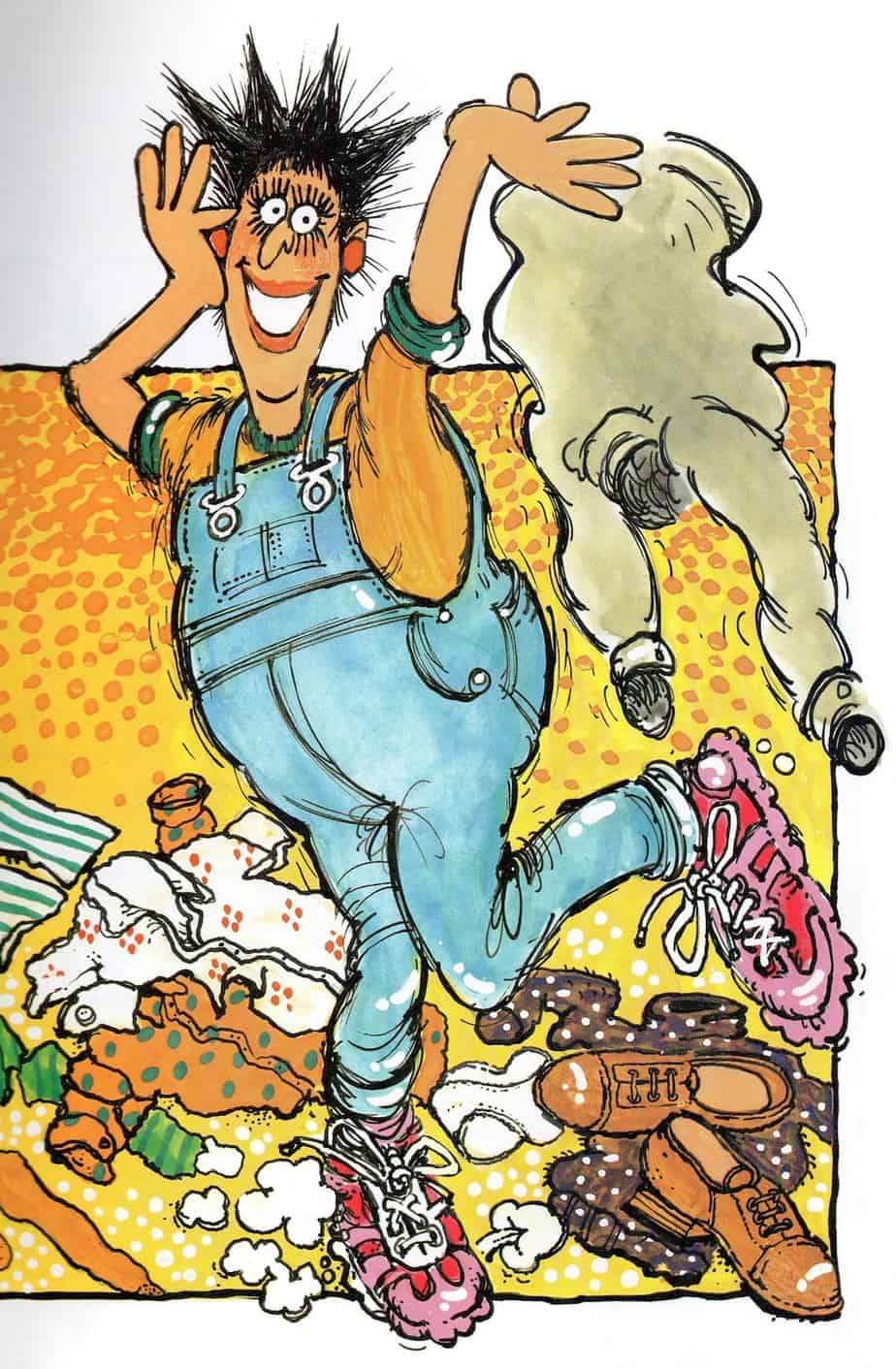
We know that when Mrs Bun gets home from work, she rips off her uniform and rummages through her wardrobe for clothes she wants to wear.
She finds jaunty denim dungarees, a sunny yellow tee-shirt and purple running shoes. She shakes her hair loose from its bun and styles it into spikes.
“Ah!” says Mrs Bun. “That feels better.”
And we think she looks COOL.
Already you can guess at the author’s message: Don’t look at an old lady and assume that’s all there is to her. In fact, don’t look at anyone and assume that what you see is what you get — there is always much more to people than the part you see.
Using the same structure, the book goes on to contrast the boring image of Mrs Bun at work with the woman who:
- lifts weights in leotards behind the garage
- does splits on the kitchen floor
- goes snorkelling at the beach
- drives a sports car
- has a colourful and wild garden
- paints abstract art
- is in a band and plays drums
- wears orange footless tights and goes out dancing
- rides a motorbike through the city at night
Finally we are told:
So next time you see Mrs Bun behind the cake shop counter, be brave enough to look into her sparkling blue eyes.
Catch the twinkle… watch her smile… listen for the bubbles in her laughter as they fizz up like lemonade.
BECAUSE WE KNOW THAT MRS BUN IS NOT BORING, DON’T WE?
The unintended consequence of this message is that the grandmother trope is not actually subverted, because having tea parties with your friends, watching TV and then turning in early and ‘scraping’ your hair back off your face and wearing grey clothes done up to your neck is — for women — the undesirable version of ageing.
This is a celebration of youth over age, because the behind-the-scenes Mrs Bun does youthful things and is full of unlikely energy.
The youthful Mrs Bun has her lips and eyelashes emphasised, because she is dressing in an acceptably feminine way.
The youthful Mrs Bun smiles, whereas the old lady Mrs Bun feels no need to smile for your benefit.
Whichever version of ageing you aspire to, it’s clear that the book comes down heavily on one side over the other. A different author/illustrator team might well come up with a story with the exact opposite message — that old lady Mrs Bun feels no need to subscribe to your narrow ideas of acceptable ageing and is past the emotional labour of smiling in a bakery, thank you very much.
And that is the problem with writing character sketches. Sometimes you want your ideology to shine through but other times you don’t. Even if you do, the reader might not get what you want out of it. Also, it’s almost impossible to describe a character without the stereotypes and prejudices of the era shining through.
CHARACTERS AND DETAILS
There are lots of ‘character details templates’ floating around on the web. Writers can download these and fill these out. They can be a very useful part of the writing process, but that doesn’t mean all those details should end up in the final product.
Pretty much every writing teacher warns against giving too many character details.
In reading for character, readers conventionally use their knowledge of the way people in the world around them usually behave to assign traits to characters, to guess about their motivations, to reconstruct their past, or even to predict what they might do after the end of the story.
Reading in this way implies that fiction is a kind of gossip. It assumes that authors say a little bit about the characters they describe so that readers can have the fun of guessing about all the aspects of character and experience they are not told about. […] But, like gossip, guessing about literary characters can misrepresent them by fitting them into categories readers already possess. Readers who want the pleasure of perceiving something more than or something different from what they already know or believe about human nature have to work with a different assumption: that authors carefully select what they choose to say, and that their choices—both what they say and what they don’t say—define what they wish readers to understand.
The Pleasures of Children’s Literature, Perry Nodelman and Mavis Reimer
I’ll go into detail about how a character looks if I think it’s really important to the storytelling. For instance, Butch the T-Rex, I wrote him to have scars and be very large.
From interview with Pixar writer
Only spend time describing what it’s important to describe, what’s going to matter in the rest of the story. That may be what your characters look like; then again, it may not. You decide.
And even if your characters’ appearance is important to you and your story, the story’s very beginning may not be the best place to go into any great detail about it. You want your readers to be able to imagine your characters, not describe them for a robbery report. Have your people talking and doing: that will make the stronger impression.
Anson Dibell
Attributes are those elements of character that people have little or no control over because they have been received as part of genetic inheritance or socialisation…Aptitudes, similarly, are largely beyond conscious intention or control, and thus part of our ‘fate’…Memorable characters are those that go beyond their attributes and aptitudes — they are defined, not by what they are, but by what they do. … Aptitudes, similarly, are largely beyond conscious intention or control, and thus part of our “fate”. … Memorable characters are those that go beyond their attributes and aptitudes — they are defined, not by what they are, but by what they do.
Howard Suber
Be mindful of the difference between ‘characterisation’ (age, looks, IQ, job etc.) and ‘true character’ (that behind the mask).
Robert McKee
This is an interesting article about librarians and stereotyping, in which the stereotype of librarians being ‘cold’ rather than ‘warm’ puts them at a disadvantage in their post 1970s role as teachers. Because the librarian workforce is overwhelmingly female, the expectation of warmth — and as carers/nurturers is higher.
SEE ALSO
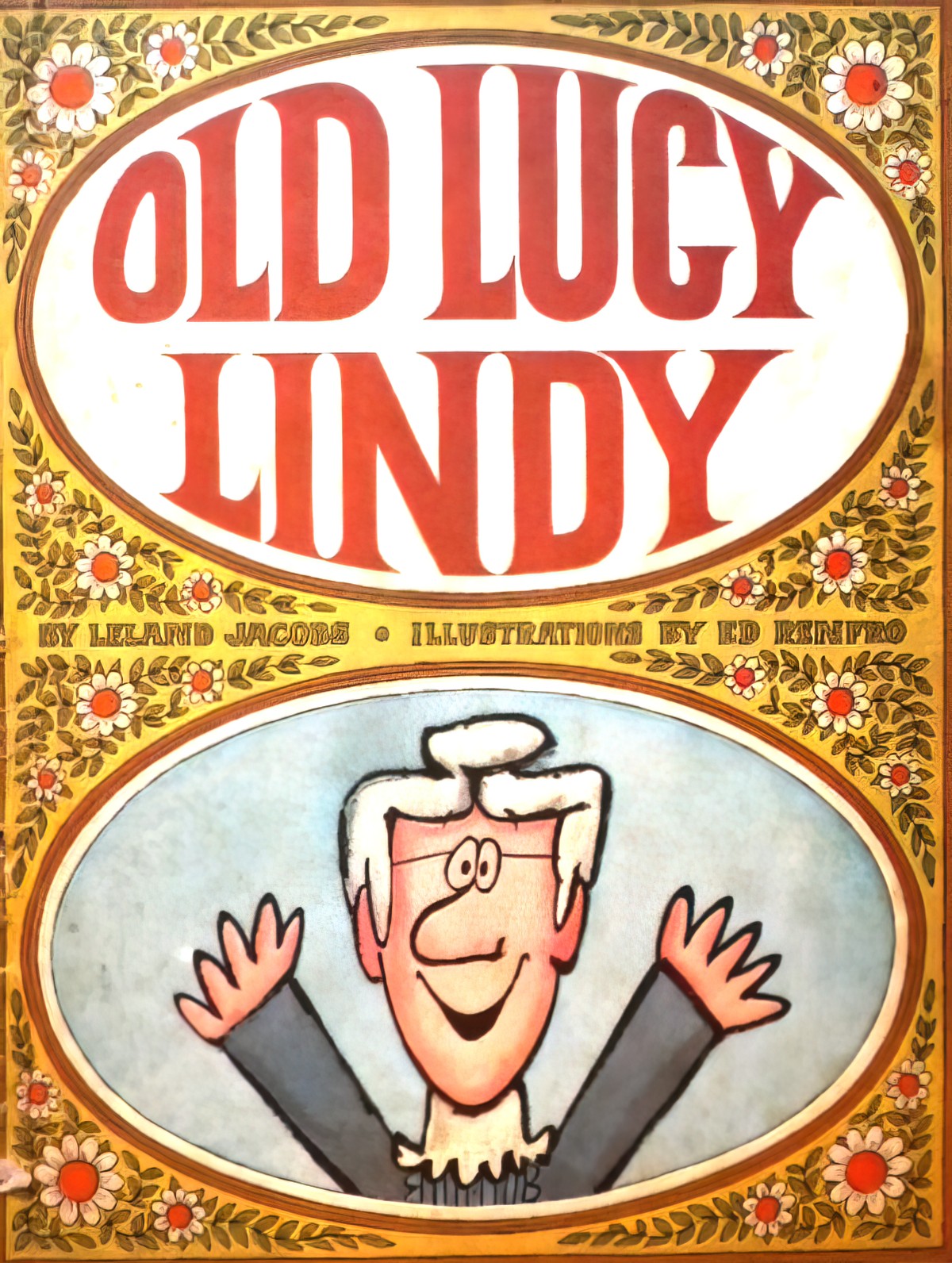
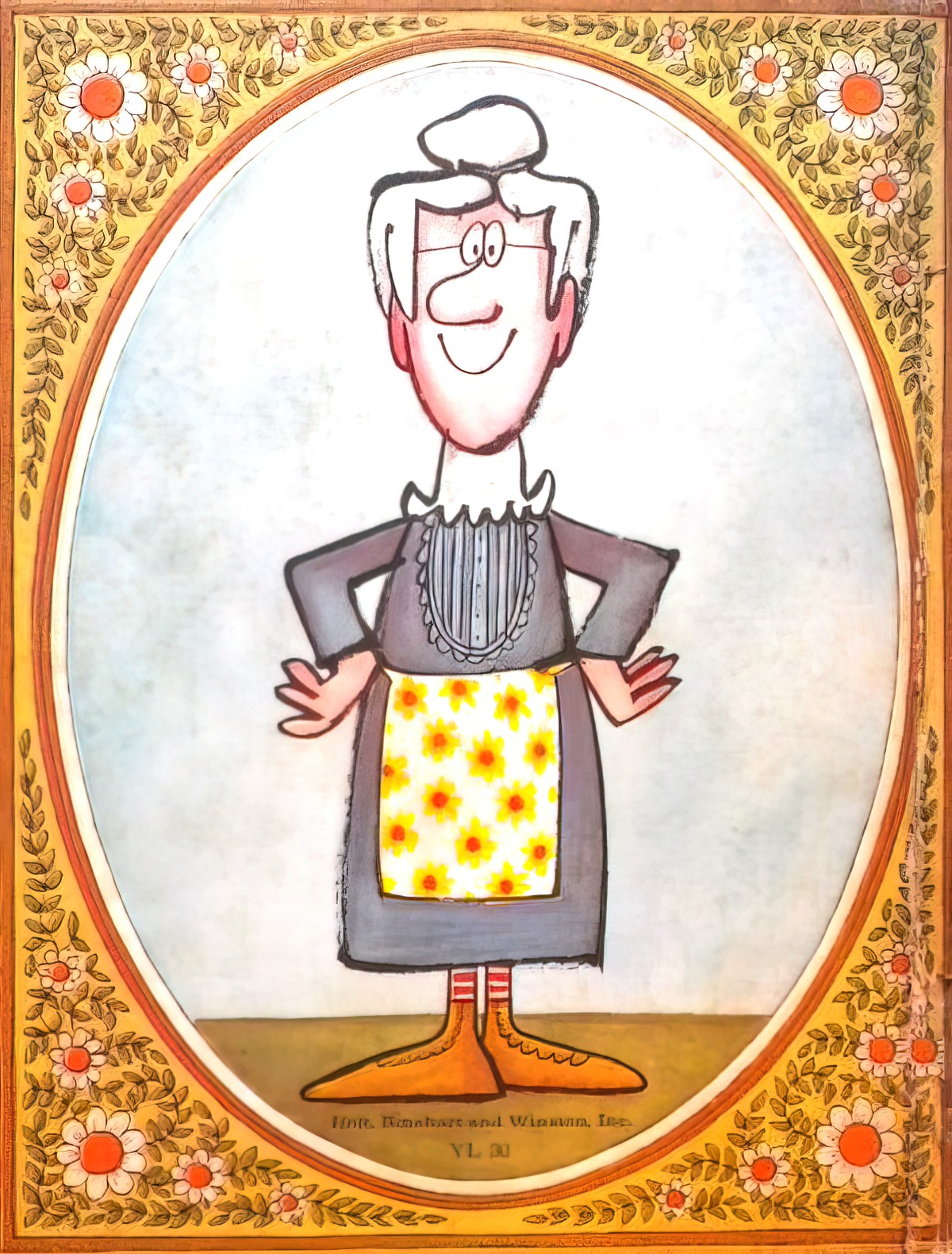
Librarians in Children’s and Teens’ Literature
The Magic Librarian at TV Tropes
The Scary Librarian at TV Tropes
The Hot Librarian at TV Tropes
